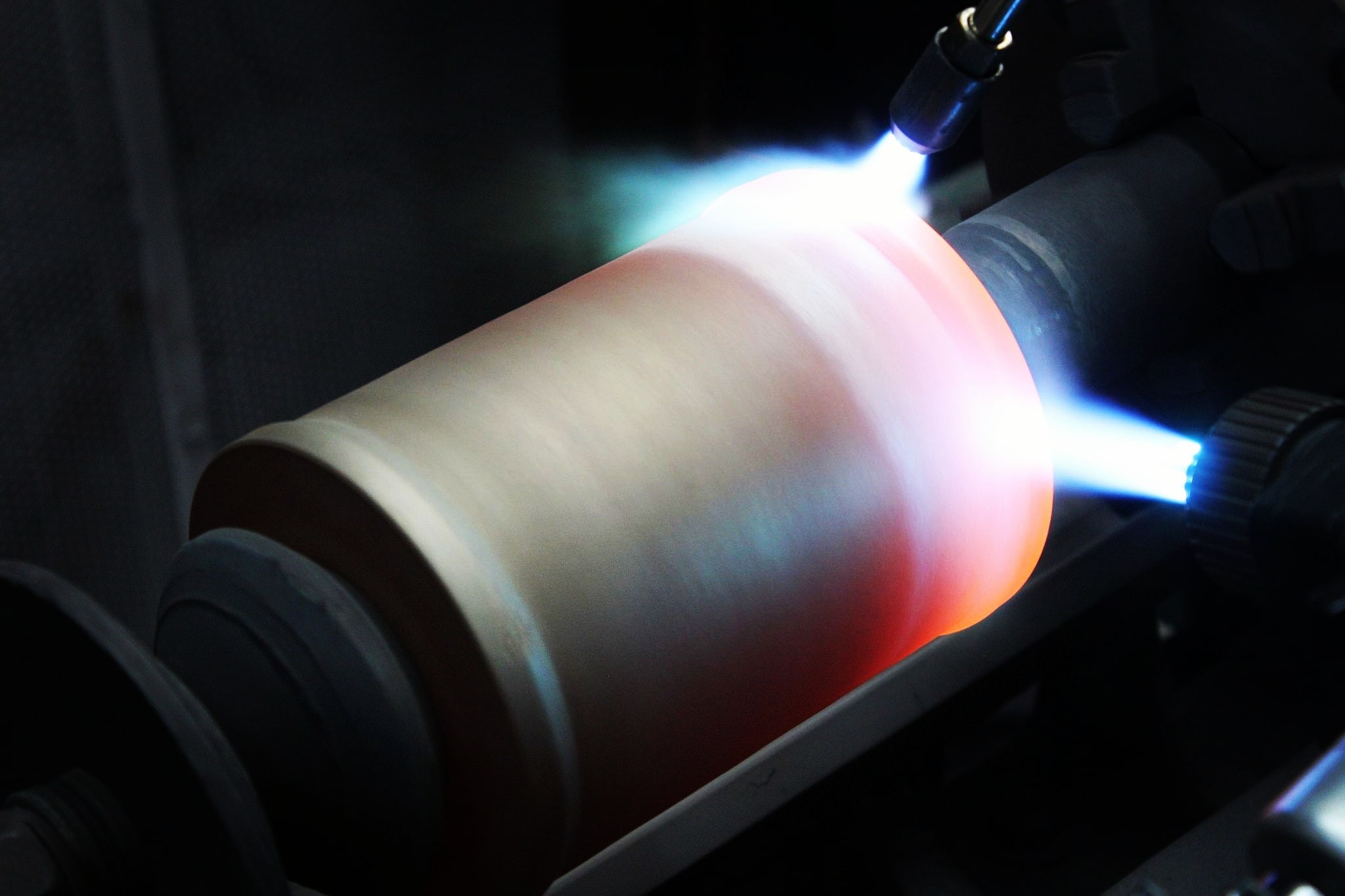
Author: Ali Kosari Mehr
Plasma spraying
Plasma spraying is a thick-film deposition process, the key difference of which from thermal spraying is the temperature of the powder melting. In this regard, the upper limit of temperature for thermal spraying is about 3300 K while an extreme temperature of 25000 K can be easily obtained by plasma spraying. In plasma spraying, plasma is deployed for providing a high-temperature source through a device called ‘plasma torch’ – interchangeably, plasma gun. A plasma torch is typically comprised of a cone-shaped thoriated tungsten cathode and a cylindrical copper anode. The gases required for the generation of the plasma flow through the annular space between the two electrodes. Afterwards, an arc commences forming by means of high-frequency discharge. Accordingly, that the gases flow between the two electrodes causes the arc to be stretched in its path from the cathode to the anode, resulting in a plasma flame forming in the outside of the torch’s nozzle. The gases used in this process are typically argon, helium, hydrogen, and nitrogen, and the temperatures of a plasma flame generally range from 10000°C to 15000°C. Hence, any metal/ceramic (e.g., refractory metals or oxides) can be melted/deposited by this means.
During deposition by plasma spraying, materials to be deposited enter the plasma flame in the forms of powder, wire, and rode in order that they could be melted. Having been heated, the materials reach the surface of the substrate owing to the acceleration caused by a plasma jet. As the particles of the materials collide with the surface, they flattened and spread out, culminating in the formation of a coating via successive impingement. In this connection, The temperature/velocity of the particles directly pertains to the gas type utilized for the generation of the plasma. It is noteworthy that most of the powders used in plasma spraying are comprised of particles the diameters of which range between 10 μm and 90 μm. Moreover, it is beneficial to utilized powders having narrow size distributions (i.e., the size of the particles are approximately equal) such that the heating/acceleration can be uniform.
References:
-
 20 Aug, 2022What is Auger electron spectroscopy?
20 Aug, 2022What is Auger electron spectroscopy? -
 13 Jul, 2022Classification of vacuum pumps
13 Jul, 2022Classification of vacuum pumps
